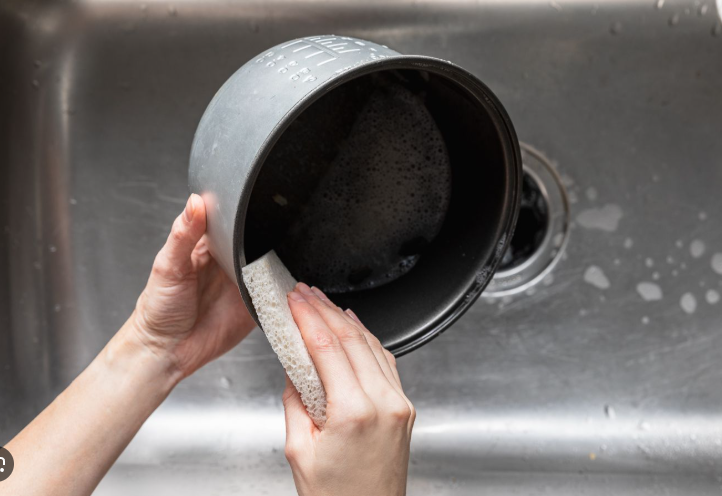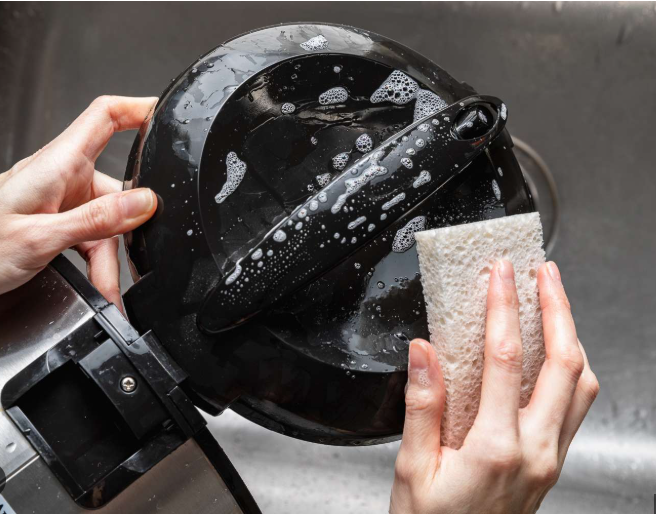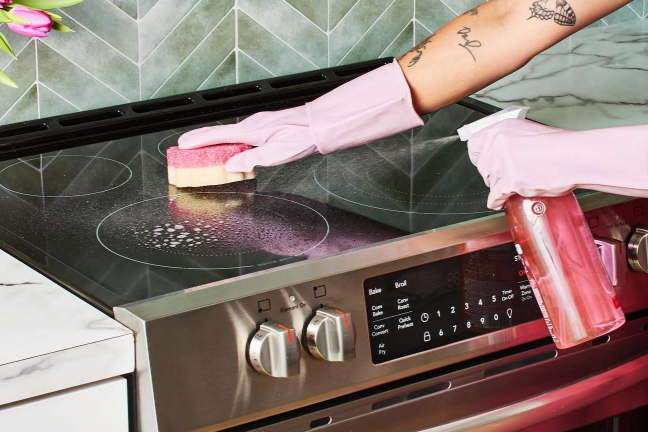Mastering how to clean an electric cooker is key to keeping your kitchen appliance in top shape, ensuring delicious meals and a longer lifespan. Electric cookers, also known as rice cookers or multi-cookers, are versatile tools that simplify cooking with electric cooker by preparing rice, soups, steamed vegetables, and more with ease. In 2025, their popularity soars due to user-friendly features like automatic shut-off, smart controls, and compact designs, making them perfect for beginners, busy professionals, or small households. Whether you’re using a portable electric cooker for travel or a family-sized model, proper cleaning prevents buildup and ensures electric cooker safety. This electric cooker user guide focuses on cleaning while covering usage basics. For more insights, check out our electric cooking tips.
This how to clean an electric cooker guide dives into preparation, a step-by-step cooking process including how to cook rice in an electric cooker, maintenance tips emphasizing cleaning, troubleshooting advice, and answers to common questions. This beginner-friendly guide ensures you master both usage and upkeep. Always consult your model’s manual for specific instructions. Let’s keep your electric cooker sparkling in 2025!
What You Need Before Using
Before diving into how to clean an electric cooker, proper preparation ensures safe and effective use. Your electric cooker typically includes a main unit, a non-stick inner pot, lid, measuring cup, and spatula. Some models come with a steaming basket for versatility. If accessories are missing, source compatible ones from the manufacturer to ensure performance and safety.
Check your cooker’s power compatibility—most models use 120V or 220V outlets, depending on your region. Verify the capacity: 3-5 cups for individuals or small households, 8-10 cups for larger families. Choosing the right size prevents spills, which can make cleaning more challenging later.

For electric cooker safety, place the appliance on a stable, heat-resistant surface, away from water to avoid electrical hazards. Inspect the power cord for damage—replace if frayed. Use in a well-ventilated area to manage steam, and never leave it unattended while on. For portable electric cooker models, ensure stability during transport to avoid spills that complicate cleaning.

Before first use, clean the inner pot, lid, and accessories with warm soapy water, rinse thoroughly, and dry to remove manufacturing residues—a critical step in electric cooker maintenance. Use the provided measuring cup for accurate portions; a 1:1.5 rice-to-water ratio works for white rice, with adjustments for brown or sticky varieties. Read the manual for model-specific details on buttons or smart features. Gather ingredients like rice, vegetables, or broth in advance, keep children and pets away from hot surfaces, and use oven mitts. Use a dedicated outlet to avoid circuit overloads, and consider a surge protector in unstable power areas. These steps ensure a smooth electric cooker setup. For more guidance, visit our cooker guide.
Step-by-Step Cooking Guide
This how to clean an electric cooker guide includes a beginner-friendly electric cooker user guide to help you use your appliance effectively, minimizing mess for easier cleaning. We’ll cover preparing ingredients, electric cooker setup, selecting modes, starting cooking, testing doneness, and electric cooker troubleshooting.

Preparing Ingredients
Start by preparing ingredients to reduce mess and simplify cleaning. For how to cook rice in an electric cooker, rinse 1-2 cups of rice under cold water until clear to remove excess starch, ensuring fluffy grains and less sticky residue. Drain well. For soups, chop vegetables like onions, carrots, or celery, and measure broth or water. Season early with salt or herbs for flavor. For steaming, place vegetables or proteins in the steamer basket. Prep takes 5-10 minutes but reduces cleanup effort during electric cooker maintenance.
Setting Up the Cooker
Plug your electric cooker into a stable outlet on a flat, heat-resistant surface. Insert the clean inner pot, add ingredients (e.g., rinsed rice and water), and secure the lid until it locks. Select the cooking mode using the control panel—basic models offer “Cook” and “Warm,” while advanced ones have presets for rice, steam, or soup.

For portable electric cooker users, ensure stability to avoid spills that complicate how to clean an electric cooker. Check the lid seal to prevent steam leaks, which can affect performance and create extra mess.
Selecting Modes
Choose the right mode for your dish. For rice, select “White Rice” or “Brown Rice” for optimized timing, reducing sticky residues that make cleaning harder. Use “Steam” mode for vegetables or fish, adding 1-2 cups of water below the basket. “Soup” or “Porridge” modes suit slow-simmered dishes. If no presets, set manual times: 20-30 minutes for rice, 45-60 for soups. Proper mode selection supports cooking with electric cooker and simplifies post-cook cleaning.
Starting Cooking
Press “Start” or flip the switch—the indicator light confirms operation. Keep steam vents clear to avoid pressure buildup, which can cause splattering. Avoid opening the lid mid-cook to maintain heat and reduce residue on the lid. The cooker switches to “Warm” mode automatically when done, keeping food at serving temperature without overcooking. Cooking times vary—smaller batches cook faster, often 15-20 minutes for rice.
Testing Doneness
After switching to “Warm,” wait 5-10 minutes for settling. Open the lid carefully with oven mitts to avoid steam burns. For rice, fluff with a spatula and check for tenderness—grains should be soft but not mushy. For soups, taste for seasoning and texture; vegetables should be tender. If undercooked, add water and restart briefly. For steamed items, test with a fork—they should be tender yet crisp. Proper doneness minimizes sticky residues, aiding how to clean an electric cooker.
Troubleshooting
For electric cooker troubleshooting, address issues that impact performance and cleaning. If it doesn’t start, check the plug and lid seal. Burnt food? Increase water or clean residue thoroughly, as buildup complicates electric cooker maintenance. Overflow? Reduce quantities to stay within capacity. Uneven cooking? Stir midway if possible. For error codes (e.g., E1), consult the manual—often sensor-related. Clean clogged vents to restore function. If issues persist, unplug and cool before retrying. This how to clean an electric cooker guide integrates troubleshooting to keep your appliance spotless.
Practice with electric cooker recipes like steamed fish, vegetable soup, or oatmeal. Simple dishes create less mess, making cleaning easier as you build confidence.
Tips for Successful Cooking
Master how to clean an electric cooker with these best electric cooker tips for peak performance. For electric cooker maintenance, clean the cooled inner pot with a soft sponge—avoid abrasives to protect the non-stick coating. Remove detachable parts like the lid or steam tray, wash with warm soapy water, and air dry to prevent mold. Never immerse the base in water; wipe with a damp cloth. For stubborn stains, soak the pot in warm water with a splash of vinegar (1:4 ratio) for 15-20 minutes before cleaning.
For electric cooker safety, use wooden or plastic utensils to avoid scratching the non-stick surface. Store in a dry place to prevent damage. Save energy by cooking in batches and using the “Warm” mode’s residual heat—many 2025 models are energy-efficient. Choose insulated models for better performance.
Explore electric cooker recipes like quinoa, steamed eggs, or yogurt for variety. Add seasonings post-cook to avoid sticky residues that complicate cleaning. For portable electric cooker use, pack securely and check voltage compatibility when traveling. Avoid overfilling to prevent spills—most pots have capacity markers. Descale every three months with a vinegar-water mix to remove mineral buildup, ensuring longevity. These habits streamline how to clean an electric cooker. For more tips, visit our electric cooker.
Frequently Asked Questions
This how to clean an electric cooker guide answers common queries to enhance your electric cooker user guide.
What Happens If Power Goes Out?
If power cuts off mid-cook, the process stops. When power resumes, restart if less than halfway done; otherwise, check doneness manually. Discard food if left warm too long to avoid spoilage, as bacteria can grow, complicating cleaning efforts.
How to Fix Common Issues?
For electric cooker troubleshooting, fix steam leaks by tightening the lid or replacing the seal. No heat? Check the outlet or fuse. Sticky rice? Adjust water ratios and clean thoroughly to prevent buildup. Regular cleaning, as outlined in how to clean an electric cooker, prevents most issues.
Do You Need Professional Help?
Minor fixes like cleaning or seal replacement are DIY-friendly. For electrical faults or persistent errors, contact a technician to avoid risks. Check your warranty for repair coverage.
Is It Safe for Travel?
Portable electric cooker models are travel-safe if voltage-compatible. Pack securely and check airline rules for smart models with batteries. Clean thoroughly after travel to maintain hygiene and simplify how to clean an electric cooker.
Conclusion
This how to clean an electric cooker guide highlights the importance of proper maintenance to keep your electric cooker performing at its best in 2025. From seamless electric cooker setup to mastering electric cooker recipes, these appliances make meal prep easy, while regular cleaning ensures electric cooker safety and longevity. Start with simple dishes, maintain your cooker with care, and enjoy hassle-free cooking.
Ready to keep your cooker sparkling and elevate your meals? Discover more electric cooking tips to master your electric cooker in 2025!